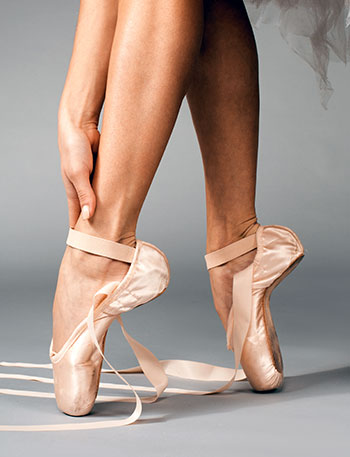
The ankle is an amazing example of anatomical architecture. It functions as a supremely durable hinge that flexes in three dimensions, sometimes simultaneously. The ankle has to be both strong and stable because it bears 150% of your body weight when you walk. That weight-bearing task elevates to 800% of your body weight when you run.
Like any other anatomical structure, the ankle joint is subject to occasional malfunction. Sometimes repetitive ankle compressions or random anomalies can cause conditions that disable the ankle’s functionality and cause intense pain. Two such instances are anterior ankle impingement syndrome and posterior ankle impingement (commonly known as os trigonum syndrome).
What is ankle impingement?
Ankle impingement (as a general category) is a condition that causes pain and limits the range of motion in the ankle due to a soft tissue or bony abnormality.
What are the symptoms of anterior ankle impingement?
The symptoms most commonly linked with anterior ankle impingement are:
- chronic pain at the front of the ankle
- swelling on the front of the ankle
- pain in front of the ankle when flexing foot up and a severely limited range of ankle dorsiflexion. (Dorsiflexion is bending your ankle so that the angle between your foot and your leg is narrowed. It happens, for example, when you try to aim your toes at your belt).
What causes anterior ankle impingement syndrome?
Anterior ankle impingement results from the formation of scar tissue, inflamed soft tissue impingement, stress fractures, or bone spurs that form at the front of the ankle joint. The most common cause of ankle impingement is overuse. In other words, incessant microtrauma to the front of the ankle joint from minor, but consistently repeated ankle injuries.
Multiple ankle sprains, and consequent chronic ankle instability, are often associated with anterior ankle impingement.
Serious athletes are prime candidates for ankle impingement

It was first labeled as “footballer’s ankle”, but “athlete’s ankle” is more appropriate, because soccer players and dedicated dancers are equally vulnerable. Anyone whose activities involve regular compression of the ankle’s anterior joint capsule is a candidate for anterior ankle impingement.
What is os trigonum, also known as posterior ankle impingement?
Os trigonum is the name of a piece of bone that usually rests innocuously at the back of some people’s feet.
Ordinarily, an os trigonum bone is a harmless anomaly that occurs in a small percentage (10 – 15%) of the population. However, if you punt a football, kick a soccer ball, swim using a butterfly kick, or go en pointe as a ballet dancer, that little chunk of bone can become a source of intense pain.
On those occasions, compression of the posterior aspect of the ankle joint turns the os trigonum bone into a posterior ankle impingement. It’s the opposite of impingement at the front of the ankle.
Os trigonum is often called the “Nutcracker Syndrome”
When a person’s foot is forcibly bent downward (plantar flexion), so the line between toes and knee is suddenly straight, an os trigonum can get trapped between three bones (the tibia, the talus, and the calcaneus), just like a walnut in a three-handle nutcracker.
The pain that results from that drastic pinching movement can be spectacular. If left untreated, it can lead to ankle arthritis or ankle surgery.
The os trigonum bone fragment has early origins. It appears as potential cartilage during the second month of fetal development. But in about 15% of the population, it never attaches to its surroundings.
Years later, through a process known as endochondral ossification, that loose cartilage turns into a small piece of bone, usually shaped like a tiny three-sided pyramid. Given the wrong set of circumstances, that little wedge can turn into a posterior impingement.
When an os trigonum is asymptomatic (and that’s usually the case), it’s causing no problems and needs no treatment. But for those athletes and dancers who habitually and strenuously point their toes downward, an os trigonum impingement can be very problematic, and treatment can be urgently necessary.
How are ankle impingements diagnosed?
Diagnosing an os trigonum can be tricky because its symptoms can resemble those of Achilles tendonitis, retrocalcaneal bursitis, or a fractured talus. Magnetic resonance imaging is often necessary to differentiate between these conditions. MRIs are excellent in reading trauma to the soft tissue structures of the foot and ankle.
Diagnosing anterior ankle impingement is a little more conventional. Physical examination, the patient’s history, and X-rays can generally identify an anterior impingement.
Other Causes of Ankle and Heel Pain
I cannot stress enough how important it is to see a trusted podiatrist for any foot or ankle pain you’re experiencing. Early, accurate diagnosis and treatment are essential to preventing further complications.
Pain or discomfort in the ankle could also be caused by osteoarthritis, dislocation, ankle fracture, or a strained Achilles tendon. While picking up a brace or orthotic insert at the grocery store might temporarily manage the pain, only a podiatrist or orthopedic surgeon can treat the underlying problem.
So if you’re struggling with foot or ankle pain, don’t wait, schedule a consultation today!
Ankle impingement treatment
Both anterior ankle impingement and os trigonum often respond well to conservative treatment. Rest, ice, compression, and elevation are usually appropriate. Anti-inflammatory medication, such as ibuprofen or acetaminophen, are frontline medications for pain management. Treatment options include sparing use of corticosteroid injections. Physical therapy is a must.
However, for the dancer, swimmer, football player, or soccer player who has a stubbornly symptomatic os trigonum and is unwilling to give up all activity that requires habitual toe pointing, orthopedic surgery may be necessary.
Minimally invasive arthroscopic surgery for ankle impingement
Fortunately, the arthroscopic surgery required to fully cure os trigonum syndrome is simple, effective, and offers a relatively quick return to full activity.
Ankle arthroscopy surgery is also necessary for the highly symptomatic anterior ankle impingement patients when conservative treatment has been inadequate. Especially when the patient demands a return to their previously lofty level of athletic activity.
Surgery for both conditions is an outpatient procedure performed with an arthroscope (a thin, tube with a camera on the end). So the postsurgical recovery is relatively brief. Most athletes can resume full activity within six weeks after surgery.
Like all other surgical procedures, surgical relief from either anterior ankle impingement or symptomatic os trigonum has associated risks. But the minimally invasive nature of each operation, the comparatively quick healing time, and the high success rate make these procedures safe and effective options for active and athletic patients who want to stay that way.
Why choose University Foot and Ankle Institute for chronic ankle pain?
If you’re experiencing front of ankle pain or back ankle pain, we’re here to help. Our specialists offer sports medicine for the foot and ankle along with the most advanced podiatric care and the highest success rates in the nation. We are nationally recognized foot and ankle specialists and leaders in researching, diagnosing, and treating all foot and ankle conditions based throughout the Los Angeles area.
At University Foot and Ankle Institute, we take our patients’ safety seriously. Our facility’s Covid-19 patient safety procedures exceed all CDC recommendations.
Trust your foot care to the best orthopedic surgeons in the Lose Angeles area! Call (877) 736-6001 or make an appointment now.
University Foot and Ankle Institute is conveniently located throughout Southern California and the Los Angeles area as our foot doctors are available at locations in or near Santa Monica, Beverly Hills, West Los Angeles, Manhattan Beach, Northridge, Downtown Los Angeles, Westlake Village, Granada Hills, and Valencia, California.
- If the Shoe Fits, Wear it… Especially for Kids Shoes! - September 4, 2023
- Is Barefoot Running Better? Or are you Running Toward Injury? - August 18, 2023
- 15 Summer Foot Care Tips to Put Your Best Feet Forward - August 8, 2023